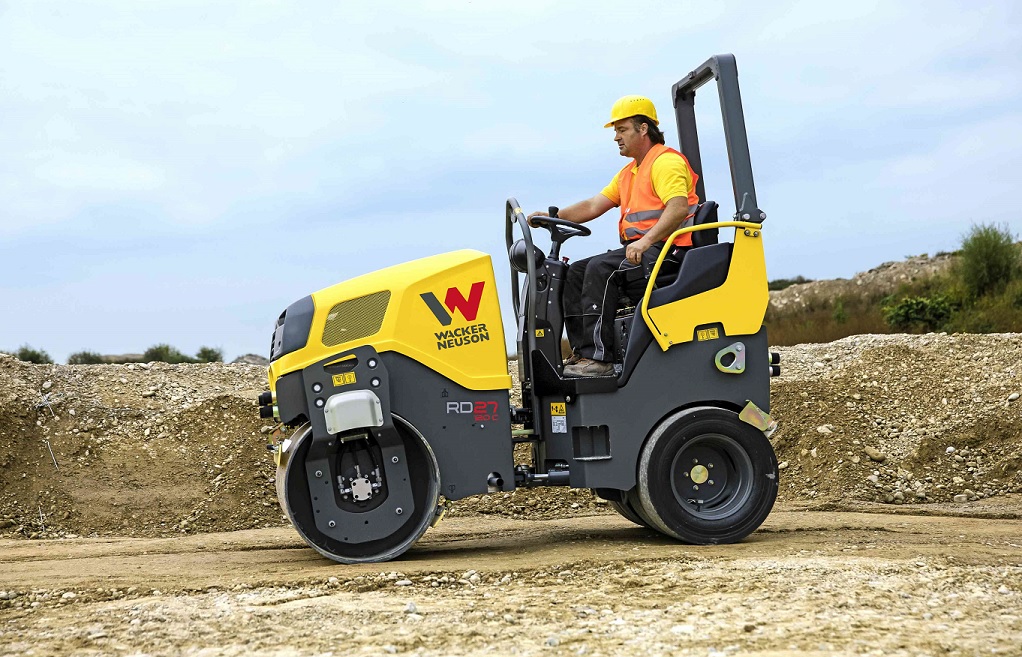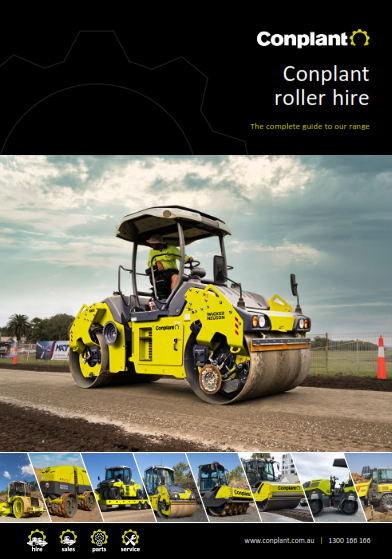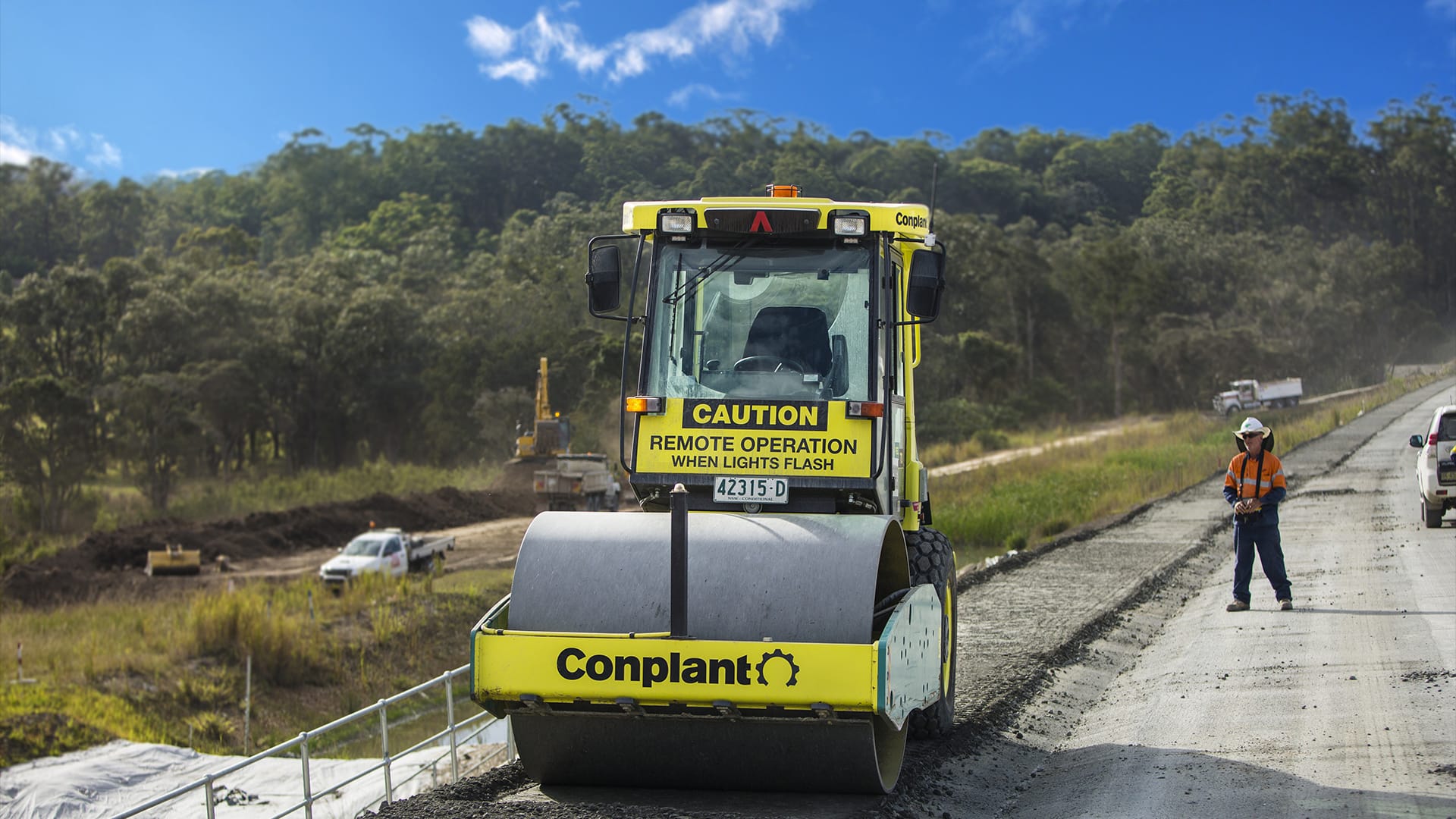Anyone in the construction game knows that before you can build - whether it’s a skyscraper, an airport or a humble residential driveway - you need a strong, well-compacted foundation.
Compaction is one of the fundamental principles of construction, but it’s sometimes thought of as something you need to ‘get out of the way’ so you can get to the next phase. As we’ll explain, applying some care and expertise in the compaction phase can save you huge (and expensive) headaches down the track.
Let’s talk about why compaction is so important, explore some of the science behind what makes a compaction job successful, and demystify a few of the technical terms you might hear from compaction professionals.
Why do I need to use a roller?
There are five principal reasons to use a roller to compact soil substrates and asphalt finishes:
- Increase the load-bearing capacity
- Reduce the settling and shrinkage over time
- Ensure a reduction in water seepage/ingress into substrate
- Reduce swelling and contraction
- Provide better overall stability
If a building or road is constructed on a loose substrate, or the finish has cracks as a result of sticking, the weight of a structure or passing traffic will slowly compact the material downward. As a result, the structure or road will slowly change in shape – causing cracks, expensive structural damage or a cracked pavement that is unusable or unsafe.

There are many different types of rollers on the market, all designed to suit a particular type of job or worksite. They vary by size, weight, compaction output and drum type.
What kind of roller should I use?
We carry Australia’s most comprehensive roller hire range, including:
For our comprehensive guide to these rollers, and our advice for choosing the right roller every time.
Common compaction terms explained
Let’s get a bit more detailed by looking at some compaction jargon that isn’t always well-understood, including frequency, amplitude, centrifugal force and static linear load.
Frequency describes the numbers of hits of the drum onto the surface of the material being compacted per second. It’s measured in hertz – 1 hertz is equal to 1 cycle per second. The optimal frequency is different for each material. For soil the compaction frequency is a range between 20 hertz (rockfill) and 45 hertz (clay). For asphalt compaction it’s 35-55 hertz.
Amplitude is the distance between the ‘up and down’ (or top and bottom) position of the drum per hit. Higher amplitudes are recommended when you’re compacting non-cohesive material, whereas lower amplitudes are suggested for the compaction of semi-cohesive and cohesive materials. For soil, aim for an amplitude range between 2.5 mm (rockfill) and 0.8 mm (clay) – and for asphalt compaction it’s best to land somewhere between 0.25-0.8 mm.
Centrifugal force depends on the frequency and eccentric mass of your drum/vibrating system. Higher centrifugal forces allow for a bigger depth effect of compaction, therefore higher compaction outputs. For harder-to-compact materials such as boulders, rocks or sands, you’ll need a higher centrifugal force
Static linear load is the value of applied linear pressure only by a drum load, generated from the machine weight itself. This factor is one of the most important technological parameters of a compaction roller and is also considered in other standardised equations and in several compaction formulas. The static linear load generally has higher compactive parameters.
Need to hire a roller for your next compaction job?
Not sure what you need?
Static vs. vibratory rollers
Another big decision you’ll have to make when compacting is whether to use a static or a vibrating roller. Most models, including our multi-tyred rollers, are available in either static or vibratory configurations.
Static machines rely purely on a high static linear load for overall compaction performance. This means that the weight of the roller and the width of the drums is critical to the compactive effort.
Vibratory drums can be adjusted to vary the frequency and sometimes amplitude of the vibratory action. As such, vibratory rollers (like the ones on our tandem smooth drum rollers) offer an ideal combination of static weight and centrifugal forces along with varying frequency and amplitudes.
Operators can turn the vibrations on or off, meaning a vibratory roller can also be used as a static roller, and can also control the amplitude and frequency to suit the project.
The drums’ vibration adds a dynamic load to the static roller weight, that in turn creates a greater total compactive effort. Drum vibration also reduces friction and aggregate interlock during the compaction process, allowing aggregate particles to naturally move into final positions. This creates greater friction and interlock that would not be achieved without vibration, which in turn equates to a great finish.
In most cases a vibrating roller is a great option – especially considering you can switch off the vibrating function if it’s not needed. You’ll need a static roller in certain circumstances where vibrations could disturb the surrounding environment – for example, near bridges or in tight residential areas.
Whatever you’re building – from a city tower block to a backyard shed – we hope these tips and concepts will help you create the right foundation.
Get our comprehensive roller hire guide
Enter your details below for a free guide to our entire roller hire range, which includes our advice for choosing the best roller for every kind of job imaginable.




